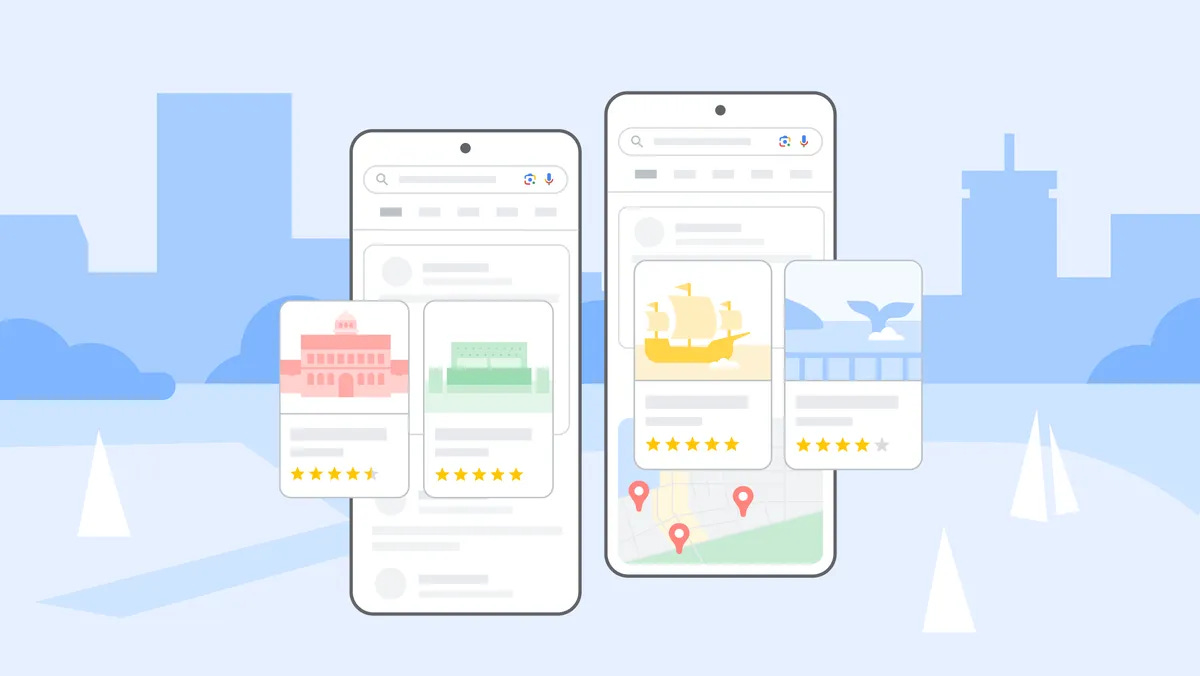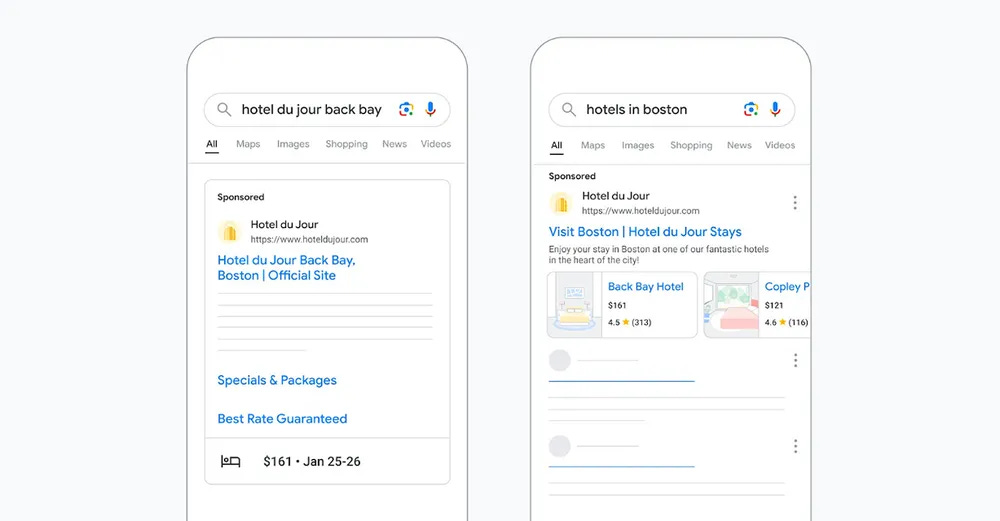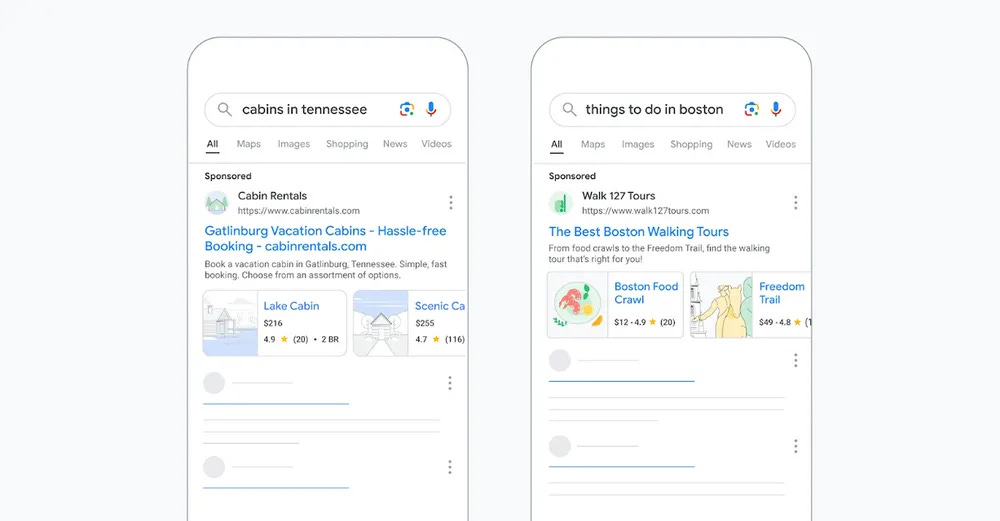How Google is helping Hotels reach more travelers
Google is rolling out a major upgrade for travel advertisers, enabling hotels to showcase real-time rates, images, user-review ratings, and other rich data directly within Google Search Ads.
Google is rolling out a major upgrade for travel advertisers, enabling hotels to showcase real-time rates, images, user-review ratings, and other rich data directly within Google Search Ads. This enhancement allows hotels to provide travelers with a clearer picture of pricing and availability, aiming to elevate user engagement and streamline the booking experience. This marks a significant shift from Google’s traditional, static ad format, offering advertisers more dynamic options to reach and attract potential customers.
Enriching the traveler experience with dynamic data
Each day, millions of people rely on Google’s Search Ads to explore destinations, book accommodations, and plan travel itineraries. To address both user and advertiser needs, Google is now letting all hotel advertisers display up-to-date feed data in their search ads, including hotel names, prices, dates, ratings, and images. This new ad format has been developed in response to advertiser demand for more versatile ways to present travel-specific data to users.
Google is also testing whether to expand this feature to other travel verticals, such as car rentals, things to do, and live events, aiming to create a holistic travel ecosystem that serves a wider range of advertisers and travelers.
How travel feeds in search ads work
Google’s “Travel Feeds in Search Ads” integrates feed-based information, which allows hotels to enrich their ads with live, dynamic data about rates, availability, and user reviews. Advertisers who have linked a travel feed to Google Ads will automatically see this information in their existing campaigns. For those who have yet to set up a travel feed, setup is straightforward, and advertisers can choose to opt out at the account or campaign level.
Driving more engagement with enhanced ads
Since the introduction of Travel Feeds, Alfonso Cano, Head of Paid at Paraty Tech, highlighted the significant impact of this feature, stating: "We have seen up to a 20% increase in click-through rates (CTR) for our clients for ads that leverage the complete range of dynamic data." This boost in engagement highlights the effectiveness of enhanced ads in capturing travelers’ attention. By featuring live rates, ratings, and images, advertisers can more easily showcase available inventory, helping travelers make quicker and better-informed choices. With this format, travelers can be assured they are viewing up-to-date information, making it simpler to decide if a property suits their budget and preferences.
A step toward a broader rollout
Currently, this enhanced ad format is available to hotel advertisers, but Google is exploring its potential in other travel categories, including car rentals, activities, and events. Expanding Travel Feeds could allow these industries to display rich, feed-based data within search ads, transforming Google Search into a comprehensive travel planning tool. By including details such as rental car availability, popular activities, and event dates, Google aims to help travelers make faster, more informed decisions.
Impact on Hotel and travel advertising
It’s still uncertain whether Google’s “Travel Feeds for Search Ads” will drive a significant shift among hoteliers and travel marketers who currently rely on organic listings or Google’s free hotel booking links, introduced in early 2022. These links appear in the “Google Hotel Ads” widget on Google.com and Google Maps, offering free exposure to travelers. While Google provides paid options for higher positioning within the widget, many hotels have opted to rely on these free links, seeing them as a sufficient means of gaining visibility.
However, Google’s latest announcement targets a different advertising space: sponsored listings that appear at the top of search results.
A Strategic move to compete with OTAs
Google’s new Travel Feeds in Search Ads offers hotel advertisers a unique advantage, allowing them to display data that rivals the depth of information found on traditional online travel agency (OTA) platforms. This added level of detail could entice more hotels to invest in Google’s ad placements, as they now have a way to compete directly with OTAs for travelers’ attention, providing rates and booking details directly in search.
The future of travel advertising on Google
With this update, Google is reshaping the travel advertising landscape by providing a more comprehensive and dynamic experience for travelers. By displaying rich, feed-based data across multiple verticals, Google is positioning itself as a go-to resource for trip planning. Travelers gain immediate access to essential booking information, while advertisers benefit from increased engagement and visibility. As Google experiments with extending Travel Feeds to include car rentals, tours, and events, this format could eventually encompass every aspect of a traveler’s journey, establishing Google Search as a robust, all-in-one platform for travel discovery and booking.
This latest update reflects Google’s broader goal of enhancing ad performance for travel marketers while improving the user experience, setting a new standard for travel ads and creating a win-win for both advertisers and consumers.
Interesting reads
Six trends shaping new business models in tourism and hospitality
European Hotel Industry and Investment Survey 2024
2024 SiteMinder Partner Awards Spotlight Hotels’ Growing Need for Simplification at WTM London






